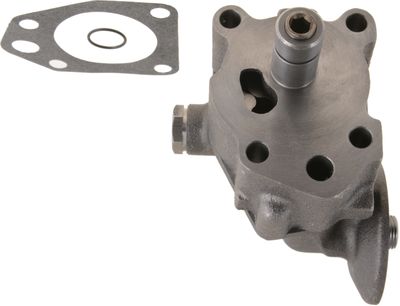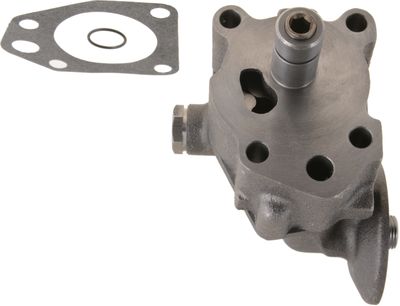Answer
Aug 19, 2024 - 01:17 PM
Inspecting the pressure of your Sealed Power 224-4174V engine oil pump involves several steps, and it's essential to approach this task carefully to ensure accurate readings and to avoid potential damage to your engine. Here’s a step-by-step guide on how you can do this:
Tools and Materials You’ll Need:- Oil pressure gauge kit (with appropriate adapters)
- Wrenches or socket set
- Oil filter wrench
- Drain pan
- Fresh oil and oil filter (if you're doing an oil change)
- Teflon tape (optional, for sealing the gauge adapter)
-
Preparation:
- Ensure the engine is cool: Working on a hot engine can be dangerous and lead to burns.
- Lift the vehicle (if necessary): If you need better access to the oil pressure sender unit or oil filter, use a jack and jack stands to lift the vehicle safely.
-
Locate the Oil Pressure Sender Unit:
- The oil pressure sender unit is typically located near the oil filter or on the engine block. Refer to your vehicle’s service manual for the exact location.
-
Remove the Oil Pressure Sender Unit:
- Use a wrench or socket to carefully remove the oil pressure sender unit. Be cautious to avoid damaging the unit or the surrounding components.
-
Install the Oil Pressure Gauge:
- Attach the oil pressure gauge to the port where the oil pressure sender unit was located. If the gauge adapter doesn’t have a perfect seal, you can use Teflon tape on the threads to prevent oil leaks.
- Make sure the connection is secure and there are no leaks.
-
Start the Engine:
- Once the gauge is installed, start the engine and let it idle.
- Observe the oil pressure gauge reading. Typically, the oil pressure should be within the range specified by the engine manufacturer, usually between 20-60 psi when the engine is warm and at idle. Refer to your vehicle’s manual for specific pressure ranges.
-
Rev the Engine (Optional):
- To test the oil pump’s performance under different conditions, you can gently rev the engine while monitoring the oil pressure. The pressure should increase slightly as the engine RPM increases.
-
Interpret the Readings:
- Compare the readings with the specifications provided in your vehicle’s manual. If the pressure is too low or too high, it could indicate issues such as a failing oil pump, clogged oil passages, or an inaccurate gauge.
-
Reinstall the Oil Pressure Sender Unit:
- After completing the test, turn off the engine and carefully remove the oil pressure gauge.
- Reinstall the oil pressure sender unit, making sure it’s tightened securely.
-
Check for Leaks:
- After reinstallation, start the engine again and check for any oil leaks around the oil pressure sender unit.
-
Dispose of Old Oil and Filter (if changed):
- If you performed an oil change during this process, make sure to dispose of the old oil and filter properly.
- If you notice abnormal pressure readings (either too low or too high), it’s crucial to diagnose the issue further before continuing to use the vehicle. Abnormal oil pressure can lead to engine damage if not addressed promptly.
- If you're unsure or uncomfortable performing this test, consider having a professional mechanic inspect the oil pressure for you.
Following these steps should give you a clear understanding of your Sealed Power 224-4174V Engine Oil Pump's performance.





Add New Comment